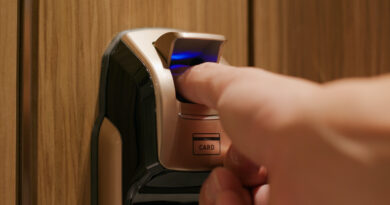How to Use Biometric Technology to Improve Your Sleep
This guest post is submitted by Mark
Getting a good night’s sleep is crucial for both our mental and physical health. Still, in this day and age, we’ve seemed to encounter a global phenomenon that is more popularly known as the “sleep loss epidemic”. According to a report from the World Health Organization, two-thirds of adults are sleeping less than the recommended amount of hours sleep.
And since “short-sleepers”, or people who are able to function at full capacity with sleeping less than 8 hours, make up for only 1% of the entire population, it’s completely understandable dealing with issues such as sleep deprivation and insomnia have been a popular topic in recent years.
It’s obvious that we need to be smarter and more mindful of our sleeping patterns. However, the pace of modern-day life has been increased immensely through technological advancements. The conditions of today’s world are somewhat conflicted with our biological setup and so it’s only natural that our circadian rhythms have been disrupted. But if technology has been pinpointed as part of the problem, could it also be a part of the solution as well?
Using Biometrics to Track Your Sleeping Patterns
The advancements in biometric technology suggest that the future is bright but they have provided us with incredible insights into how our body functions and acts throughout the day. A particular benefit is that it allowed us to track our own personal metrics which is crucial because it allows us to spot the unique individual patterns and requirements our bodies have. In terms of regulating sleep, there are tons of options that can provide us with all kinds of valuable biometric data. We can subsequently use this data to optimize our routines and get the most out of our sleep.
In some people, the use of biometric data can cause more anxiety which is primarily due to the fact people are not well-acquainted with sleep tech and are not sure how to draw the most useful conclusions from the gathered information. Optimizing your sleep is not something you should take lightly and it’s important to invest some time into learning about all of the factors at play and how they are related.
How to Monitor Your Sleep Using Biometric Technology
There are all sorts of devices and software that can help you get the most relevant sleeping metrics. These sleep trackers, which come in a range of different products from wearables, to mattress sensors to phone apps, can provide you with accurate data about your sleeping time as well as the type of sleep you’re getting. Using these types of biometrics, you can get relevant information to use as starting points for your overall sleep-improvement strategy.
The most relevant data you will acquire and focus on is when are you going to bed every night, the time it takes you to fall asleep and lengths of different periods such as light or deep sleep. Sleep trackers also record your movement, meaning they can provide you with information regarding restlessness and waking periods you experience during the night.
When gathered, these metrics are then uploaded to spreadsheets and represented in the form of a graph. Once you start comparing data gathered you’ve gathered over an extended period of time, you’re going to start noticing patterns that will give you a better sense of what your circadian rhythm looks like. But the true potential for improving your sleep comes from combining personal biometrics with other significant data.
Other Types of Data You Should Be Tracking
All of the data that you’ve gathered using biometric technology becomes a starting point for your trial and error experimentation. There are plenty of factors that affect our quality of sleep but the intensity and type of their influence can, in fact, differ from person to person. They can be both internal as well as external and the most important one include:
- Factors related to comfort – the softness of the mattress and pillows, bedsheet quality, room temperature, amount of light, and air quality are all aspects you can experiment with
- Daily levels of stress and anxiety – making subjective estimates of your daily levels of stress and anxiety will help you track how they affect the quality of your sleep
- Diet and Eating Habits – eating schedule and consumption of particular types of food and beverages, as well as their amount, can also affect the quality of your sleep
These are everyday factors you should be tracking but make note of specific situations that aren’t something that’s usually a part of your schedule. For instance, take note of things like jet lag or short-term uses of medication.
Additional Tips for Getting the Most out of Your Strategy
Realizing the importance of sleep is one of the key ways of boosting your daily productivity levels. It’s pretty much common sense! Having more energy throughout the day accompanied by the absence of sleep deprivation symptoms can truly reinvent how you lead your day to day life.
But, as you can tell, the topic of sleep is very complex and the factors that affect it are heavily intertwined. This shouldn’t really scare you but only encourage you to be flexible and experiment with your routines and habits. Make short-term controlled changes in your daily schedule and monitor how and if they affect the data.
Essentially, you’ll be making educated guesses based on factual and personalized information but you should take your own subjective interpretations of the quality of your sleep and energy levels throughout the day as the main source of feedback. You yourself should decide what works for you and what doesn’t. The numbers are only there to help guide your strategy.
AuthorBio: Mark is a biz-dev hero at Invoicebus – a simple invoicing service that gets your invoices paid faster. He passionately blogs on topics that help small biz owners succeed in their business. He is also a lifelong learner who practices mindfulness and enjoys long walks in nature more than anything else.











